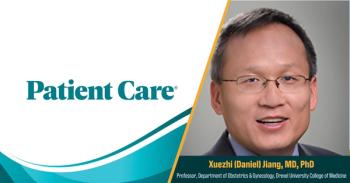USPSTF Shift: Aspirin Use for Primary CVD Prevention Carries Greater Risk, Less Benefit
The USPSTF shift to a more conservative recommendation on use of aspirin compared to its 2016 stance is based on new RCT data and net benefit modeling.
People aged ≥60 years should not begin daily aspirin regimen for primary prevention of cardiovascular disease (CVD) or stroke and those aged 40 to 59 years who are at increased risk for CVD should make a decision with their healthcare provider about whether the benefits of aspirin for CVD prevention outweigh the risks, notably internal bleeding.
The guidance comes from a
“Daily aspirin use may help prevent heart attacks and strokes in some people, but it can also cause potentially serious harms, such as internal bleeding,” said Task Force member John Wong, MD, in a USPSTF
The draft recommendation is a shift in USPSTF guidance from its 2016 statement in which task force members advised daily low-dose aspirin for adults 50 to 59 years with a ≥10% 10-year CVD risk, without increased risk for bleeding and recommended that a decision to begin prophylactic aspirin be individualized for adults aged 60 to 69 years with similar risk.
At the time the evidence was insufficient to assess the harms/benefits of initiating aspirin in adults aged <50 years or ≥70 years.
REVIEW AND EVIDENCE
To update the 2016 recommendation USPSTF commissioned a systematic review to evaluate new evidence for the effectiveness of aspirin to reduce CVD event risk (MI, stroke) and CV- and all-cause mortality in persons without a history of CVD. The analysis also evaluated the risk of aspirin-associated bleeding in primary prevention populations.
The 13 randomized controlled trials (RCTs) identified that provided results on the efficacy of aspirin to prevent CVD morbidity and mortality included a total of 161 680 individuals; men and women were evenly distributed across RCTs and mean age ranged from 53 to 74 years. The majority of trials used low-dose aspirin (≤100 mg/day).
The Task Force found that aspirin use for primary prevention of CVD is associated with decreased risk of MI and stroke but has no effect on CV mortality or all-cause mortality.
Pooled analysis of 11 trials using low-dose aspirin, the dose most relevant to current clinical practice, found a statistically significant decreased risk of nonfatal MI; similarly, pooled analysis of 5 trials showed low-dose aspirin linked with statistically significant decrease in risk of nonfatal ischemic stroke.
Fatal CV events were less common, researchers reported, with pooled analysis showing no statistically significant effect of low-dose aspirin on fatal MI, stroke, CV- or all-cause mortality (follow-up, 3.6-10 years). The authors note that they see no suggestion that aspirin’s relative effect on CVD outcomes is modified by baseline CVD risk, however, the absolute magnitude of the benefit is higher in those at higher CVD risk.
Evidence for the relative benefit of aspirin on CVD outcomes, the USPSTF found, was not impacted by age. Total enrollment in the CVD prevention trials included 22 000 aged <50 years and >37 000 aged ≥70 years, leading the task force to conclude the evidence on the benefit of aspirin was adequate for all age groups, including those aged 40 to 49 years and those aged ≥70 years.
RELATIVE HARMS, NET BENEFITS
The USPSTF reviewed 14 RCTs in CVD primary prevention populations that reported on the bleeding harms of aspirin. Looking at a pooled analysis of 10 trials (n=119,130) reporting on low-dose aspirin use, the practice was associated with a 58% increase in major GI bleeding and a similar analysis of 11 trials (n=134 470) showed an increase in intracranial bleeds in the aspirin vs placebo group.
The data, according to the draft recommendation, suggest the increased risk of bleeding seen with aspirin occurs “relatively quickly” after treatment initiation and that is no differential effect relative to characteristics including age, sex, diabetes, CVD risk, race, or ethnicity. The absolute risk of bleeding, however, and thus the magnitude of harm, does increase with age and more so in adults aged ≥60 years.
A microsimulation model study commissioned by the USPSTF to assess net benefit of aspirin use in primary prevention found a modest net benefit in both quality-adjusted life-years (QALY) and life-years gained in both men and women ages 40 to 59 with a ≥10% 10-year CVD risk. Aspirin initiation in adults aged 60 to 69 years yielded a gain in QALY that ranged from slightly negative to slightly positive depending on CVD risk level and a general loss of benefit in life-years. Starting aspirin in adults aged 70 to 79 had negative net benefit on both QALY and life-years overall, even in those with up to a 20% 10-year CVD risk.
The USPSTF concludes in this draft statement: In primary prevention populations, low-dose aspirin reduces major CVD events, MI, and ischemic stroke, but also increases major GI bleeding, extracranial bleeding, and intracranial bleeding. More precise real-world US-based estimates for bleeding events in the general population and specific populations with elevated CVD risk are necessary to accurately estimate the net benefit.
Reference: Guirguis-Blake JM, Evans CV, Perdue LA, Bean SI, Senger CA.
Newsletter
Enhance your clinical practice with the Patient Care newsletter, offering the latest evidence-based guidelines, diagnostic insights, and treatment strategies for primary care physicians.







































































































































































































































































































